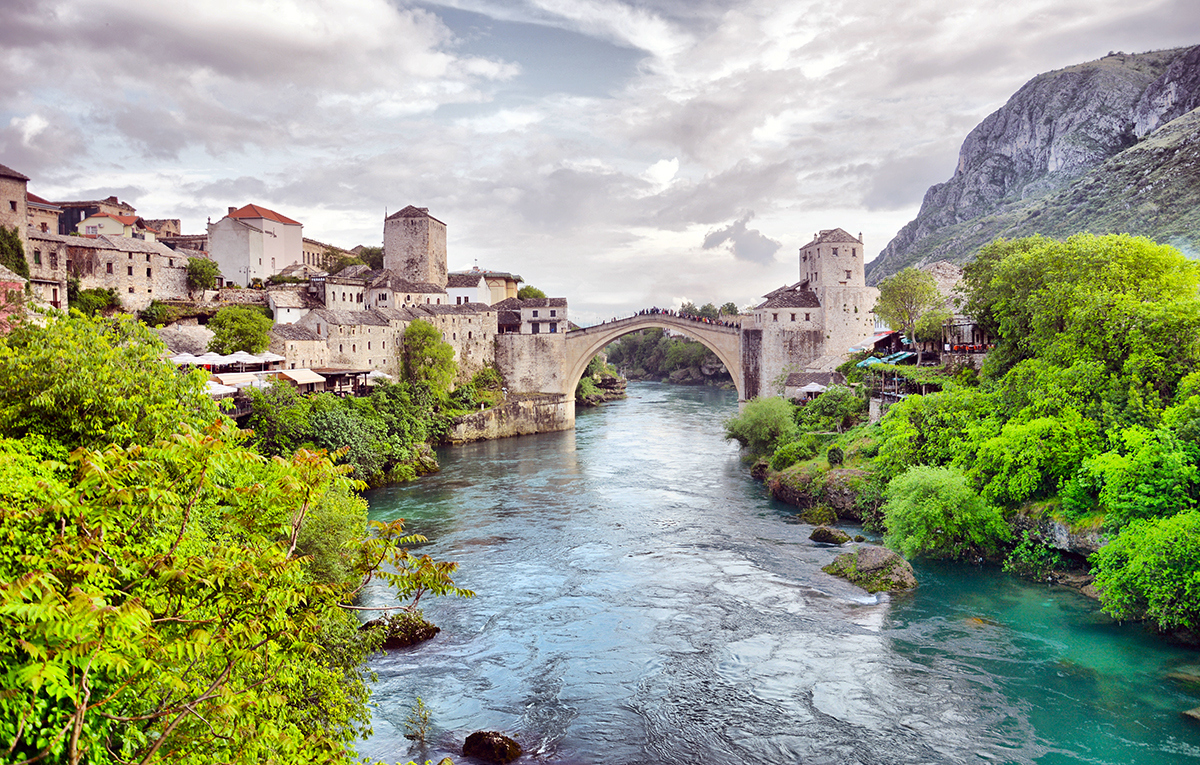Where the heck is Bosnia and Herzegovina?
Bosnia and Herzegovina (Bosnia-Herzegovina) is often simply referred to as Bosnia. Or you might see it as BH. It’s one country and one that used to be part of the former Yugoslavia. So get your map of Europe out and find Croatia, just to the east of Italy — remember Italy is the boot. Croatia is a C shaped country and lying in that opening of the C is where you’ll find Bosnia-Herzegovina.

Map of Bosnia and Herzegovina
Okay, now that we know where it is, let’s get some background on this country.
Yes, there was a war here back in the early 1990’s. You see, there are several ethnic groups and different religions that were at odds with each other. Yugoslavia worked under the leader, Josip Broz Tito. But when he died, things didn’t work so well. Then the fall of the Soviet Union happened (Yugoslavia was considered to be part of the Soviet bloc of communist countries in eastern Europe) — and well, that was the end of Yugoslavia.
The Bosnians, the Serbs, the Croats — they all wanted their independence and war broke out. Genocide happened — mostly of the Bosnian Muslims. It was all very ugly. I’m giving you a very basic version here as wars and fights for independence are always far more complicated.
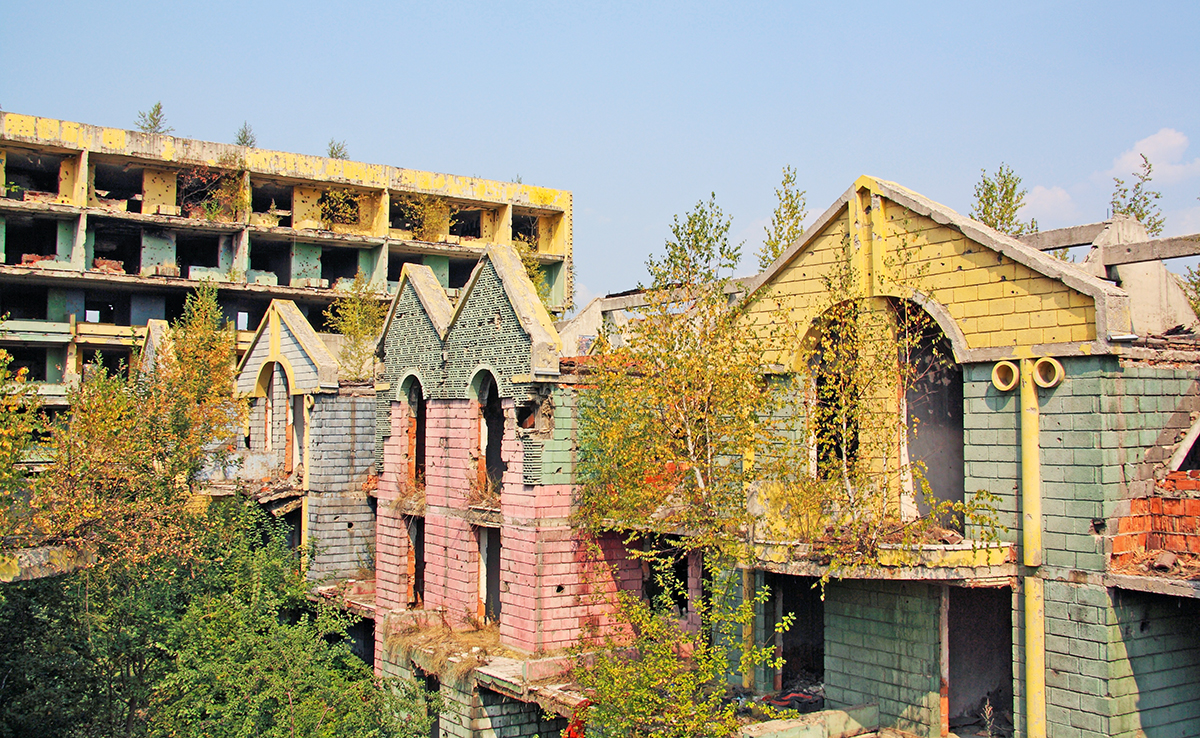
War torn buildings of Sarajevo
In the end, after three years of war, things calmed, an agreement was signed (right here in my home state of Ohio) and peace began to settle into the area.
And in the past 5-10 years, the entire area has become a fabulous place to travel to. It’s just as beautiful as much of western Europe and has vibrant cities to entice. But it’s cheaper.
Croatia is the most popular of the former Yugoslavia countries with its stunning coastline and numerous islands. I’ve talked about Slovenia before — small and compact with gorgeous mountains and lakes and a fabulous capital city.
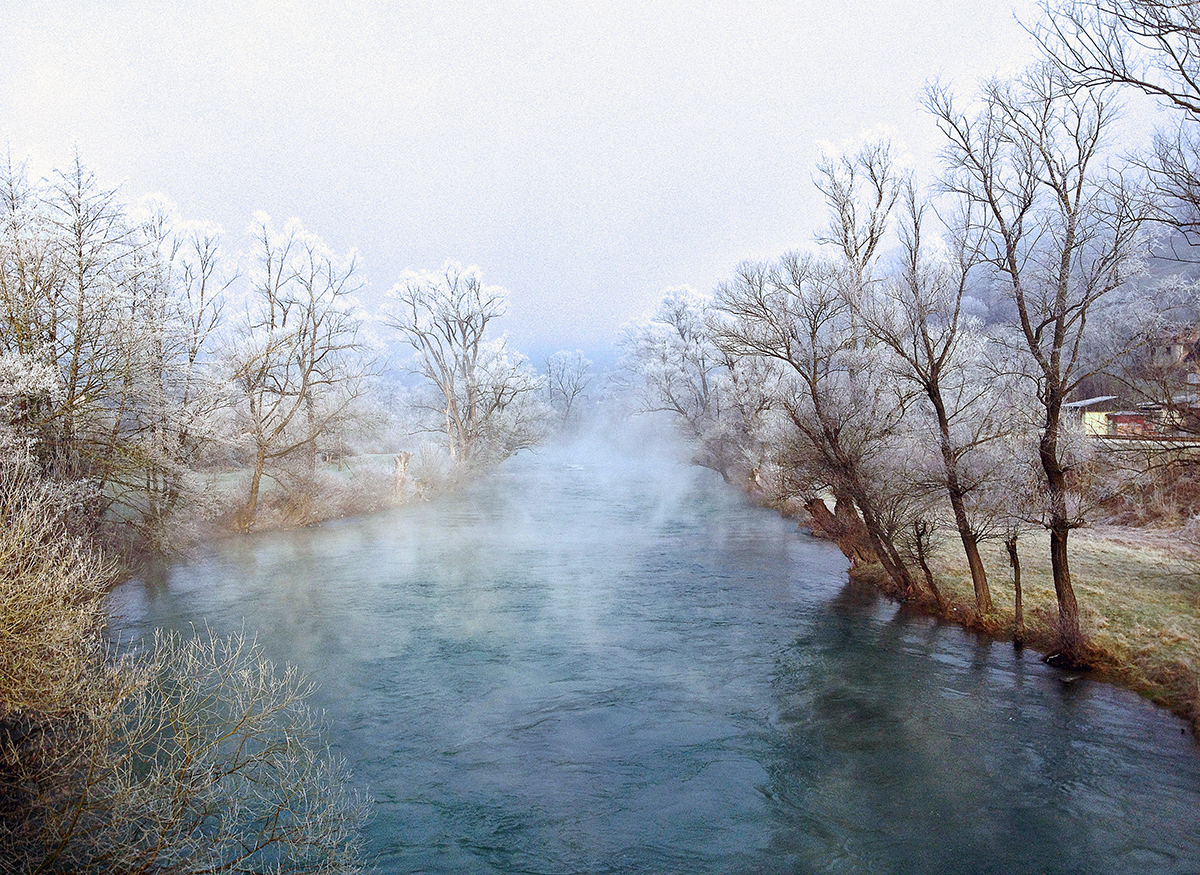
Sana River in winter, Bosnia-Herzegovina
But now, it’s time for Bosnia-Herzegovina.
One of the best things about this country is its diversity.
A little over half the population are Muslim and just under half are Christian, mostly Serbian Orthodox Christians. There are a small amount of those who identify as Roman Catholics. So you’ll see mosques and churches as you wander about the cities and towns. I love this!
Then you’ll hear all kinds of languages — Bosnian, Serbian, Croatian — but you’ll be able to get by with your English. But how fun is it to hear all these unique sounds.
Bosnia-Herzegovina is also a very “East meets West” country. It’s the western Europe blending with the eastern Europe in a very unique mix that makes this country so intriguing.
And the diversity of the landscape won’t disappoint either. The country is very mountainous, with the Dinaric Alps being the center of attention. But you’ll also find thick forests, rushing rivers, cascading waterfalls, fertile plains and vibrant cities and sleepy villages.
Intrigued? You should be!
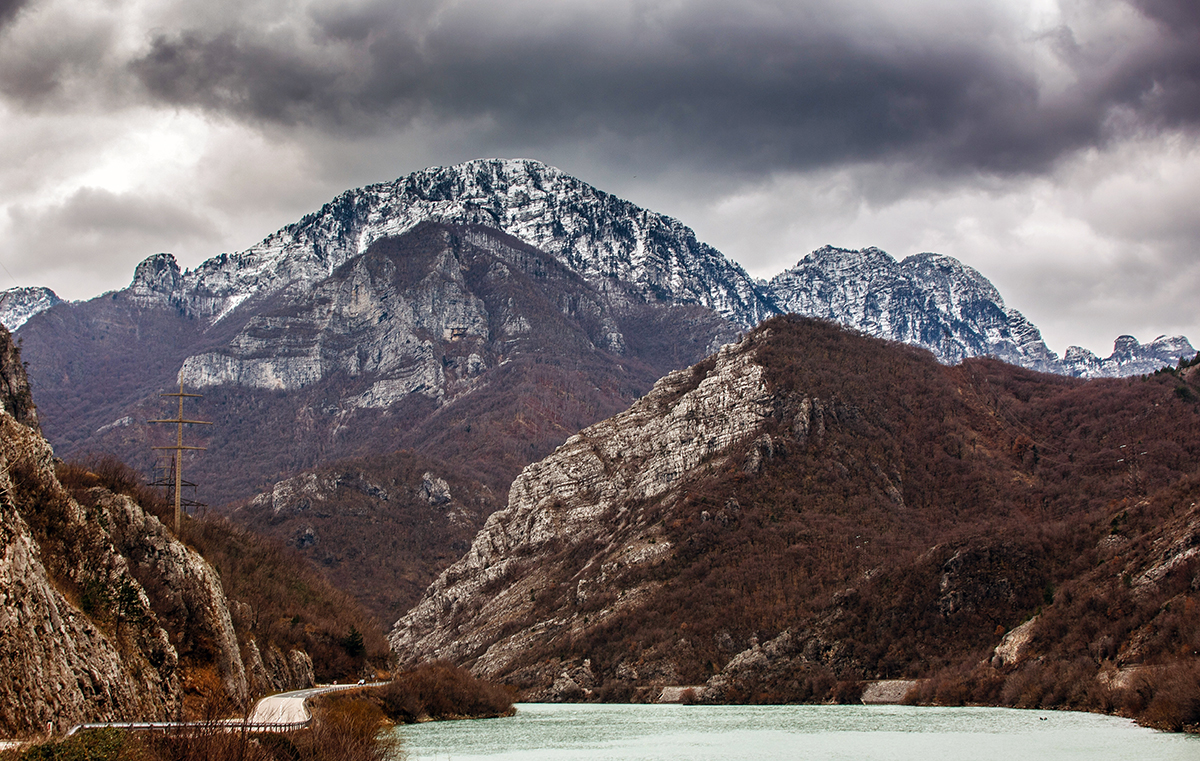
Mountains of Bosnia-Herzegovina
Sarajevo is the capital.
Yes, that Sarajevo — where the 1984 winter Olympics took place. The city took a beating during the war, but it’s been rebuilt and it’s a must see.
Some call it a Slavic mini-Istanbul. There’s definitely an Ottoman flair to it with mosques, kebab cafes and bazaars lining the streets, the scent of freshly ground coffee in the air.
Bascarsija is the city’s center and Old Town and where you’ll truly feel like you are in that mini-Istanbul. This is where most of the sights are. I’m a huge fan of mosques. Their geometric patterns and the colors are typically stunning. The Bascarsija Mosque and the Gazi Husrev Beg Mosque are 2 you’ll want to check out with the latter being the most beautiful.
There’s more to Sarajevo than the city center though. Remember: this is the city where Archduke Franz Ferdinand of the Austro-Hungarian Empire (of which Bosnia-Herzegovina was part of) was assassinated, sparking the start of World War I. The Latin Bridge was the scene of the assassination so it’s worth a look-see if you’re a World War I and even World War II history buff. There’s a museum nearby that commemorates this time in history.
And if you’re interested in the more recent civil war in Bosnia, then be sure to check out the Historical Museum and the Tunnel Museum.
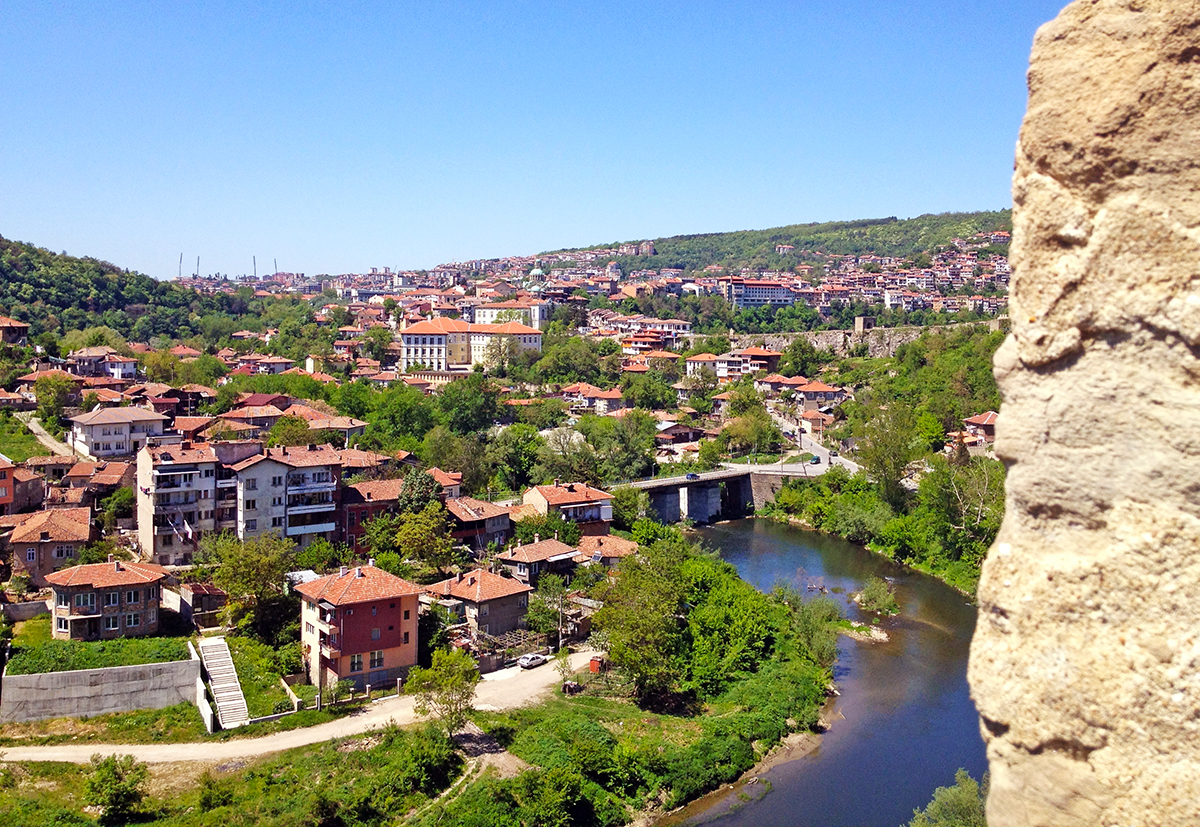
Aerial view of Sarajevo, the capital city of Bosnia-Herzegovina
Mostar might be even more well-known than Sarajevo.
Located in the Herzegovina area which is full of rugged mountains and rushing rivers (and probably has more to see than Bosnia, but don’t tell Bosnia that!), this town is known for its bridge. Something tells me you may have seen a photo like this before.
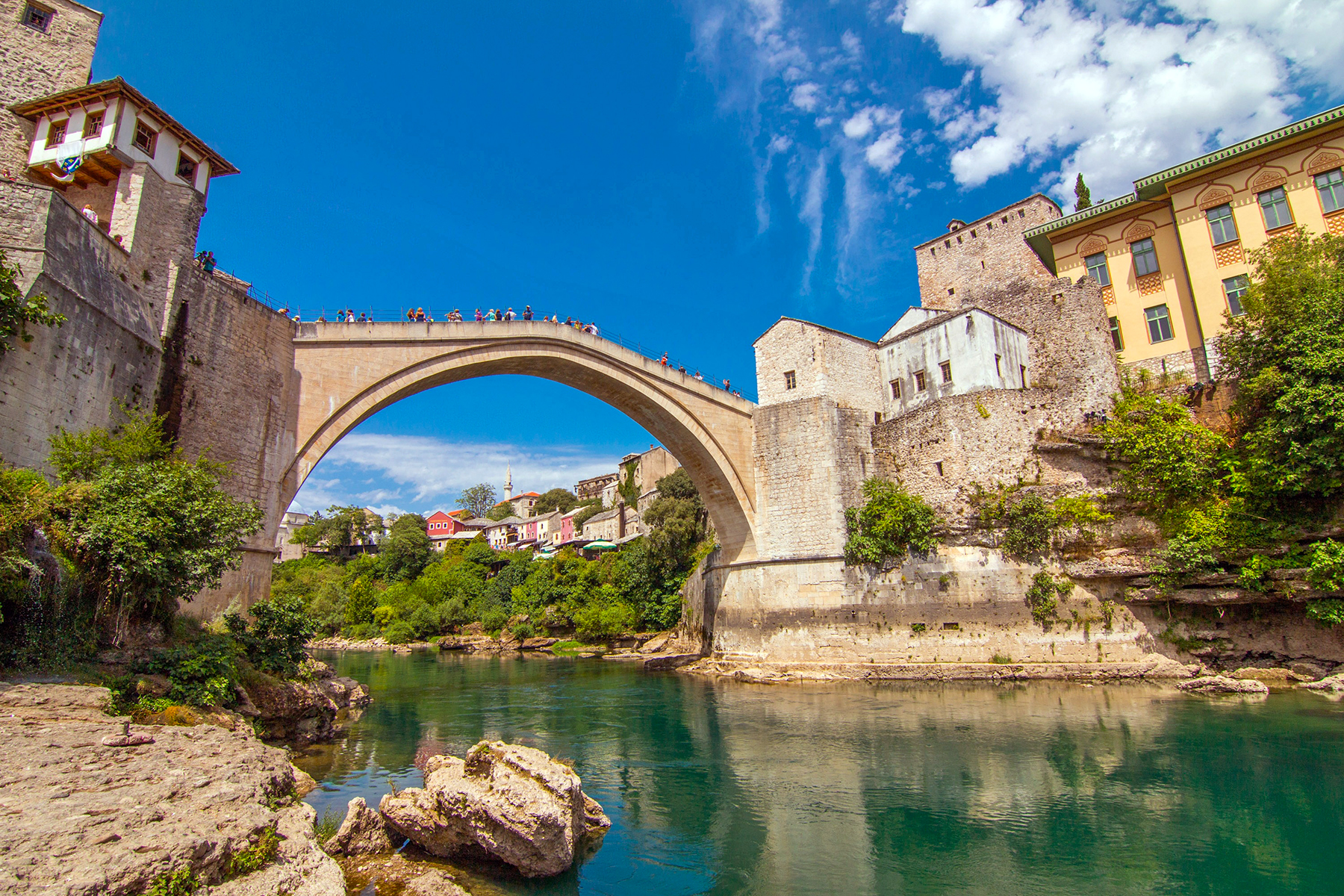
Old Bridge in Mostar, Bosnia-Herzegovina
This is the Old Bridge that spans the Neretva River. It was actually destroyed in November 1993 by the Croat forces. They rebuilt it using new materials but the same techniques as the initial construction. It was finished in 2004.
There are many young men who dive from the bridge into the river. It’s a bit busy and touristy at midday since Mostar has become more popular, so stay the night and enjoy an evening or an early morning walk when the crowds have gone away. Then it’ll be you and the locals.
Mostar has more to it than the famous bridge. Kujundziluk (gold alley) beckons with its shops selling trinkets. Wander down cobblestone lanes of the Ottoman quarter. There was fierce fighting here in Mostar and there are still some visible scars. But it’s another wonderful destination to see the Muslim and Christian, the East and West, blend together, even if it is tenuous at times. The east bank of the river is where you’ll find the mosques — Koski Mehmed Pasa Mosque and the Cejvan Cehaj Mosque. It’s probably the more vibrant of the 2 banks. On the west bank you’ll find the Catholic Croats and a very interesting War Photo Exhibition.
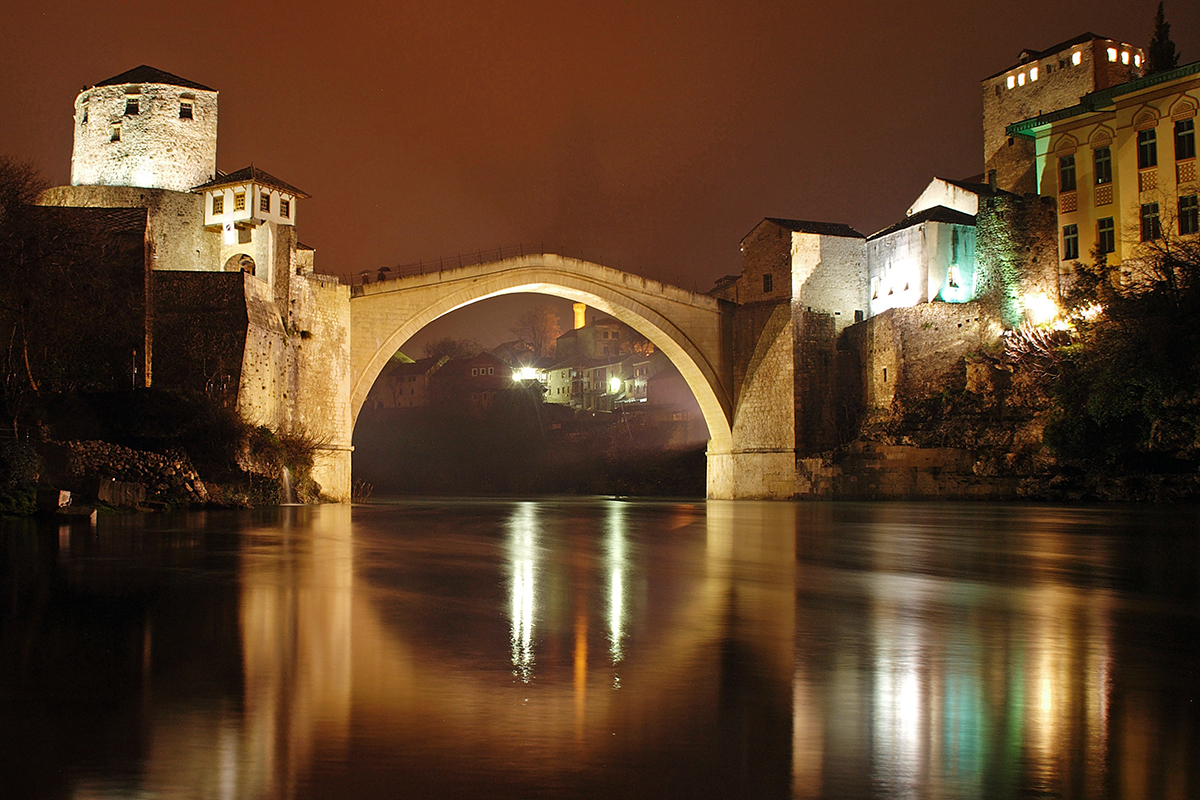
Old Bridge of Mostar at night, Bosnia-Herzegovina
Another town with a bridge in Herzegovina is Trebinje.
It’s a bit quieter here in the southern part of the country, but quite picturesque. The Arslanagic Bridge was built in the 16th century and is the star of the town. Get this — it was actually moved in 1972, stone by stone, from the village of Arslanagic which is about 5km away. I’m sure that wasn’t easy!
The Old Town is a pleasant place to while away some time, wandering the streets and sipping on some good coffee at one of the cafes.
Nearby you’ll find some hilltop monasteries to explore. Tvrdos is 6km west of Trebinje and one of the best for a visit.
And finally…
Jajce is a town in Bosnia that is worthy of some time as well, especially if you like waterfalls. There’s some beautiful 21m high waterfalls on the edge of town.
The Old Town is charming with its walls, churches and catacombs. This is the town where Bosnia’s kings were crowned back in Medieval times. While there aren’t any major sites, there is enough to keep you occupied for a good day and Jajce makes a fabulous base to explore the surrounding mountains, lakes and canyons.
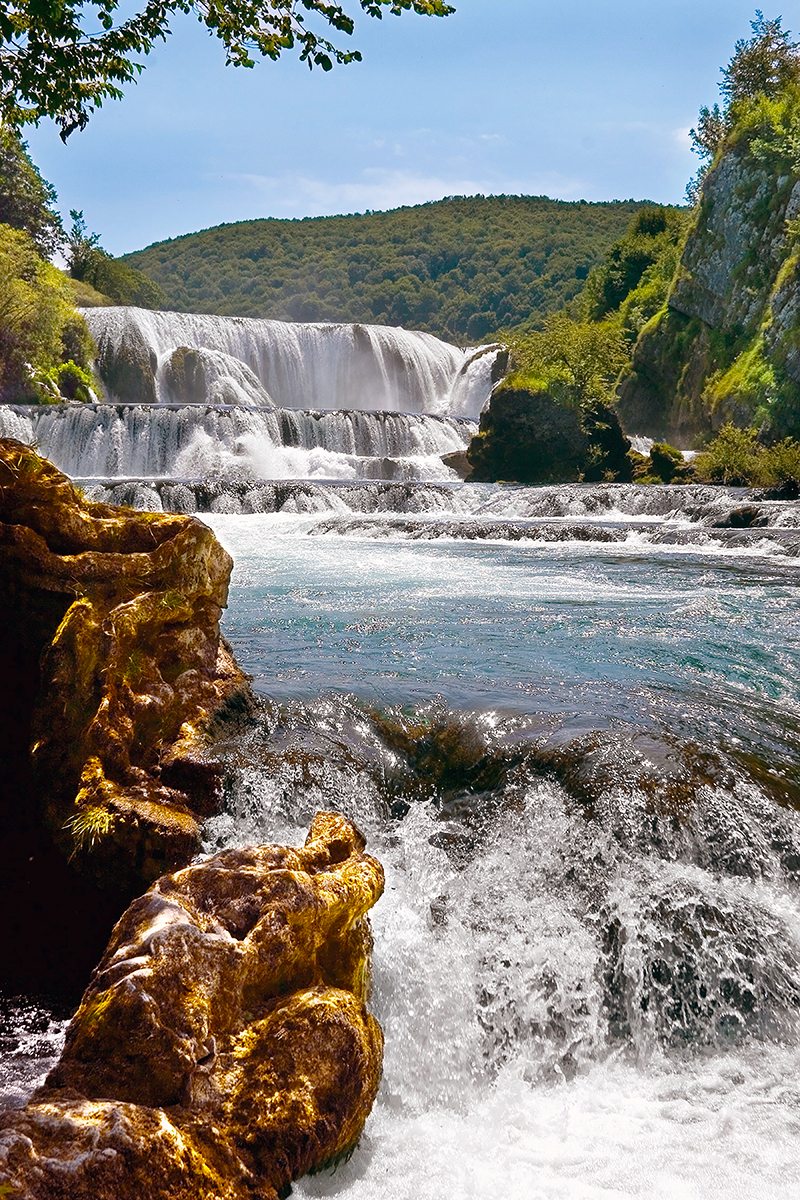
Una River, Bosnia-Herzegovina
What else is there to do?
The great outdoors beckons with rafting, kayaking, canoeing, canyoning, hiking, fishing and skiing and snowboarding in winter. If you are an outdoor adventurer, even just a little, then Bosnia-Herzegovina is for you.
There are some wonderful Medieval sites such as castles and fortified towns. And the history here is quite interesting with Ottoman and Austro-Hungarian influences. The more recent war is certainly still fresh in some people’s minds, but learning about it is a great way to understand the people.
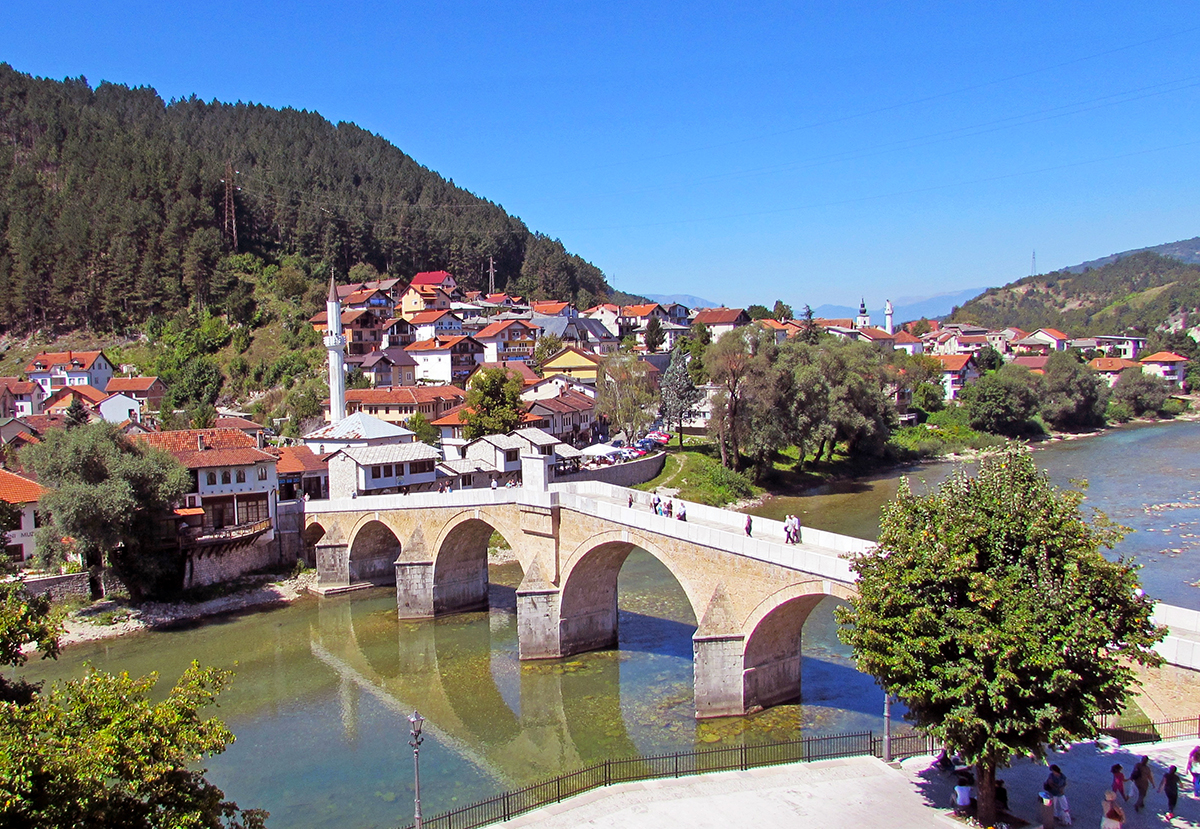
Konjic, Bosnia-Herzegovina
What should I eat?
You definitely want to try a Cevapi. This is the Balkan version of a kebab. The Banja Luka Cevap is square and pretty large. The Sarajevo version is round and a bit smaller.
A Burek is a pastry made of filo dough and stuffed with either meat, cheese, spinach or apple. It’s an inexpensive and easy to find snack.
The food is meat based although you’ll find some good trout in Mostar. Janjetina, lamb on a spit, is a tasty treat usually eaten on special occasions. And cured meats, not made of pork, are also part of their diet. Stews are big for every day meals.
To drink, try Bosnian coffee which is much like Turkish coffee. The wine is quite good in the Herzegovina area and domestic beers are found most everywhere. And the plus side — alcohol isn’t as heavily taxed so it’s a bit cheaper!
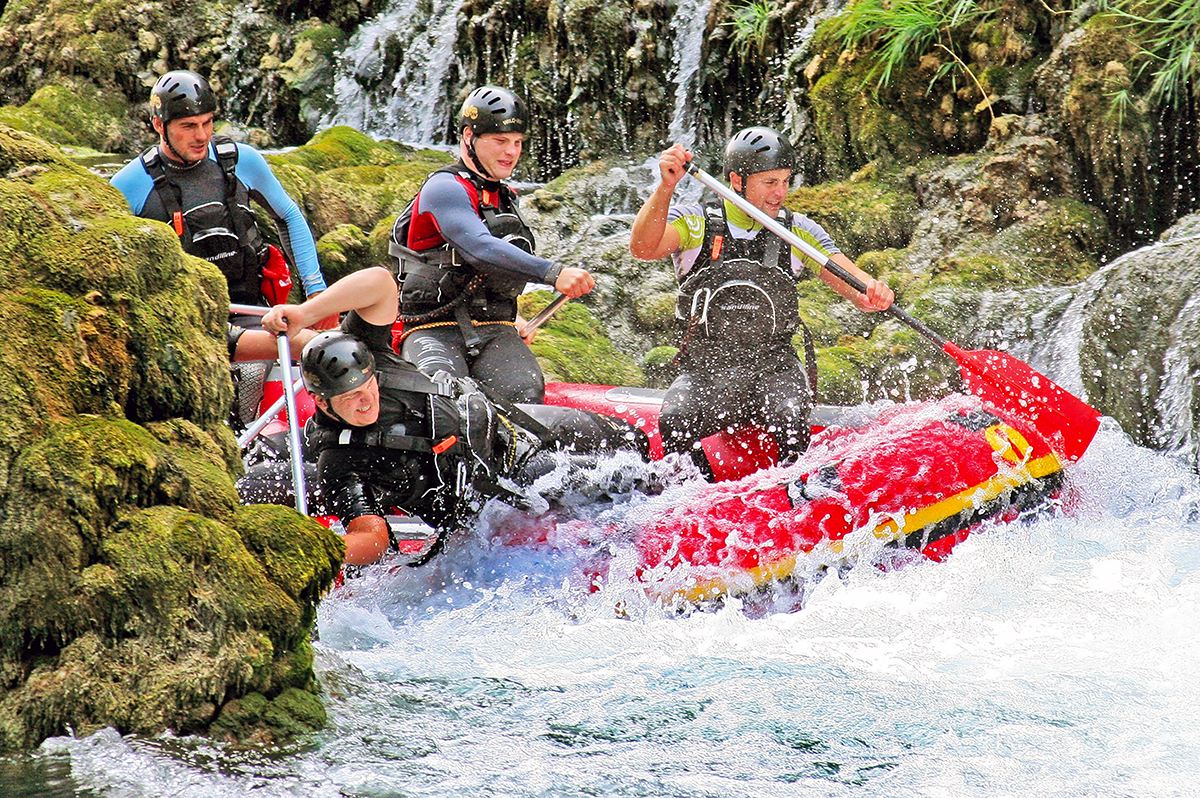
Rafting in Bosnia-Herzegovina
Ready to go?
BH is a fabulous, up and coming destination. While the tourist infrastructure isn’t going to be quite on par with Germany or France or England, it’s getting better. So if you’re a first time traveler to Europe, this may not be a good choice for you. But if you’ve got a trip or 2 under your belt to Europe, then this might be a good destination for you to visit.
The people are warm and kind — and eager to share their country with you. The diversity will make you feel as though you’re visiting a couple of different countries at once. Add in yummy food, tasty drinks and a beautiful landscape and you’ve got a perfect destination.
So what are you waiting for?
All photos courtesy of Pixabay.

